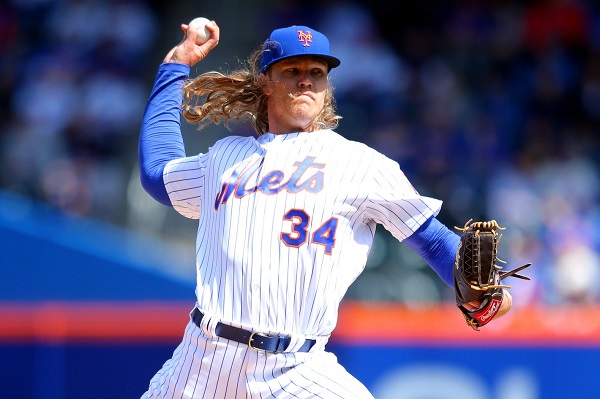
When Mets ace Noah Syndergaard reported to spring training, he looked much bigger than he had looked in his previous two years with the team.
With his new muscular physique many were concerned Syndergaard would suffer an injury during the 2017 season.
Syndergaard shrugged off the critics, and when he was lights out to begin the season, fans began to shrug it off as well.
Then disaster struck.
He suffered a sore bicep, and he refused an MRI. In his next start, which would be the final one of the season, he lasted just 1 1/3 innings before he had to depart from the game. An MRI revealed a partially torn lat. From May until just last week, Syndergaard was prevented from picking up a baseball.
As he once again resumes throwing, it is time for him to reassess the training regiment that might have put him in this precarious situation.
As Syndergaard now admits, “I don’t think necessarily this off-season I lifted the smartest weights. I want to go to the weight room and feel taxed. Sometimes I’d leave the weight room not feeling that, so I’d do a little extra stuff.” (James Wagner, New York Times).
The end result is Syndergaard looking at not just different exercise routines he can use, but also different areas of his body that he now believes he was neglecting. Part of this process is going to the Soho Strength Lab to take part in the Kinstretch program. According to the Kinstretch website:
“The KINSTRETCH system is one born out of scientific research. All of the movements and training techniques have been selected based on a meticulous and rigorous investigation of evidence, conducted by physical conditioning and medical experts, as it pertains to body control, injury prevention, joint health, and physical longevity.”
















